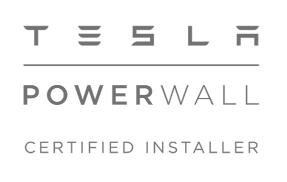Renewable energy sources are gaining popularity due to their potential to reduce your carbon footprint and energy bills. While wind turbines and hydroelectric plants are ideal for large-scale power generation, solar panels are integral to the residential and small-scale commercial energy mix. But how do solar panels work, and what are the key elements of the solar panel system that deliver clean energy?
What Are Solar Panels Made Of?
The main component of a solar panel is the photovoltaic (PV) cell, which is responsible for converting sunlight into electricity. PV cells comprise a semiconductor material, usually silicon, with unique electrical properties that make it ideal. Silicon is a highly abundant and versatile material widely used in electronics and other industries. PV cells typically consist of a thin wafer of silicon coated with a layer of phosphorus and boron to create a positive and negative charge, respectively.
Another key material in solar panel construction is the substrate, which provides a stable base for the PV cells to sit on. The substrate is usually made of glass, which allows the solar panel to harness as much sunlight as possible while protecting the delicate PV cells from the elements. Glass must be specially treated and coated to resist scratches and minimize reflection, both of which can reduce the panel’s efficiency.
The third major component of a solar panel is the frame, which provides support and protection for the PV cells and substrate. The frame is typically made of aluminum or a lightweight, durable metal that can withstand the weight of the panel and any weather conditions it may encounter. The frame also helps to keep the panel in the correct position for optimal sunlight exposure.
In addition to these primary components, solar panels may also contain other materials such as wires, connectors and plexiglass covers. These materials help to connect the PV cells to a power inverter, which converts the DC electricity produced by the panel into AC electricity that homes and businesses can use. The plexiglass cover helps to protect the panel from impact, weather and UV rays.
Solar Inverters
A solar inverter is an electronic device that converts the DC electricity generated by solar panels into AC electricity that can power homes and businesses or feed into the grid. It acts as a bridge between the solar panels and electrical loads, converting the DC voltage and current into AC voltage. The solar inverter also converts the DC voltage into a current of the correct frequency for appliances and devices requiring AC power. There are three main types of solar inverters: string inverters, microinverters and power optimizers.
There are different types of solar inverters, but they all function using the same basic principle. Here’s how it works: When sunlight hits a solar panel, it creates an electrical current that flows out of the panel as DC electricity. The DC electricity is then transferred to the inverter, which converts it into AC electricity to power appliances.
Understanding the Flow of Energy in Solar Panels
Solar panels have silicon cells that act as semiconductors. The cells contain two layers of silicon, one with a positive charge and the other with a negative charge. When sunlight hits the solar panel, it excites the electrons in the silicon.
This excitation creates an electric field within the solar panel, which causes the electrons to move from the negatively charged layer to the positively charged layer. The movement of electrons causes an electric current to flow within the solar panel. This electrical current is what we can harness and use as electricity.
Solar Storage Batteries
The energy generated by your solar panels may be more than what your home uses during the day. In such cases, instead of sending it back to the grid, you can store the surplus energy in solar storage batteries. These batteries store excess energy during the day so that you can use them at night or on cloudy days. Solar batteries offer more energy independence and reduce reliance on the grid. As a certified installer of Tesla Powerwall, GVEC Solar Services offers battery storage solutions, including the sleek, efficient Powerwall.
Contact the Professionals
With solar power growing in demand as a reliable and clean energy source, knowing how it works and what it means for your energy future is essential. GVEC Solar Services is a team of solar energy experts in South Central Texas who can help you harness the sun’s power and keep your energy costs low. Our solutions combine the latest solar technology with our expertise to deliver superior performance and energy independence. Whether you are considering solar panels for your home, business or farm, we can help. Contact us today and experience the benefits of solar energy!



